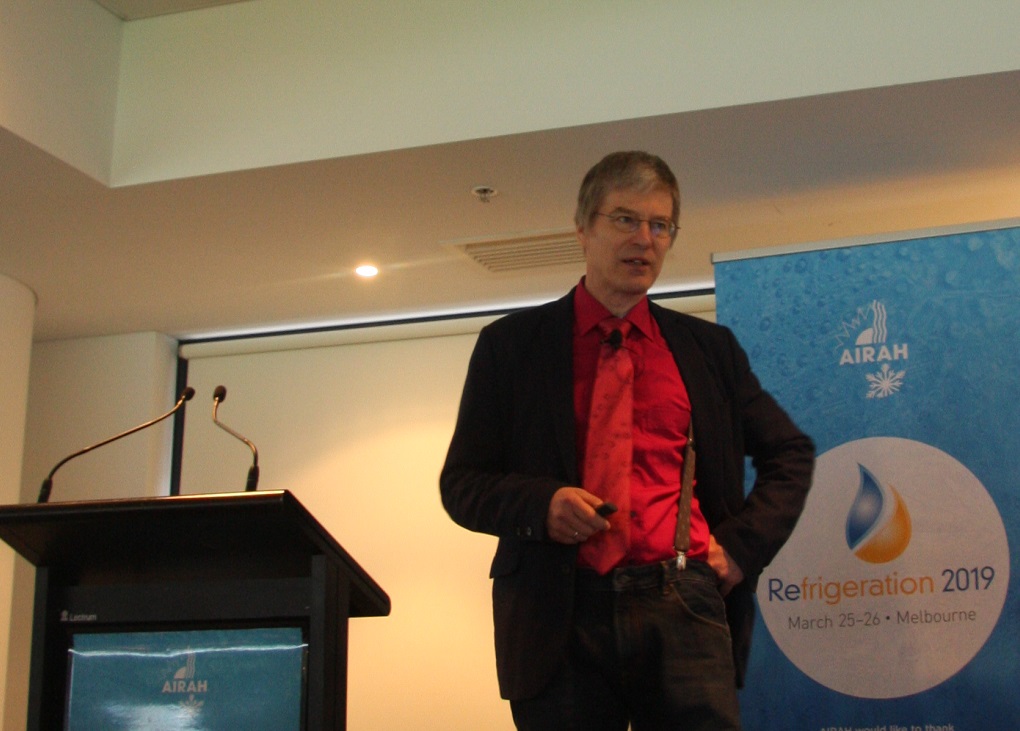In a recent trip to Australia for AIRAH’s Refrigeration 2019 conference, Prof. Dr. Michael Kauffeld of Germany’s Karlsruhe University of Applied Sciences shared his expertise on natural refrigerants.
In his keynote presentation, Kauffeld detailed the HFC phase-down and what’s coming next for refrigeration, particularly with regards to natural refrigerants such as CO2, ammonia and hydrocarbons.
Following his presentation, he gave an interview for the latest episode of the AIRAH on Air podcast and also spoke with HVAC&R News about his experience.
“There were a lot of good presentations,” says Kauffeld. ”The audience was very interested and keen to learn more about the stuff I presented.
“They were asking me especially about transcritical CO2 systems, how come they’re so popular in Germany and what my personal view on them for Australia would be.”
“I said OK, if the climate is cold enough, do it. But I don’t think Australia has many spots where it is cold enough, so in my opinion it would be much better to have propane or ammonia systems, and then if you want to do CO2 you can have CO2 as a cascade system for the freezers and you can do pumped CO2 for the medium temperature, or you can use a glycol loop for the medium temperature.”
“It’s easy from the point of view that it’s not toxic and it’s not flammable. But you have fairly high pressures and the energy efficiency when the outdoor temperature is high is not so good. Of course you can use water spray on the gas cooler, that helps a little bit. You could add ground probes for additional sub-cooling. You can also use ejectors, so you would gain about 15 per cent efficiency. But I don’t think you’re probably still not there where you would be with an ammonia system.”
Kauffeld says that although the HFC phase-down presents an immediate challenge for the refrigeration industry in Australia, the main issue that emerged from his conversations in Australia was the lack of skills in the industry.
“What I heard is that the skills of the refrigeration fitters, fridgies you call them, is not as good as it used to be. That’s also something we see in Europe.
“When Carrier started with CO2 around 2006 they took their most experienced refrigeration guys to build the first CO2 systems and they then educated the next generation. In that way they educated themselves within the big companies.
“But the smaller refrigeration companies where you only get 10 or 20 people, they have to rely on training from associations like AIRAH. In Denmark they have HFC taxes, and they use part of that money to educate people in the field. If you are a registered refrigeration fitter company, and of course you are paying HFC tax because you are buying HFC refrigerant, then you are entitled to six or eight hours of free advice every year, and you get discount fares for the training courses. Something like that helps.”
To hear more from Kauffeld about his views on natural and synthetic refrigerants, listen to his conversation with AIRAH on Air host Mark Spencer here or stream it below.
 Mark Vender
Mark Vender


Leave a Reply